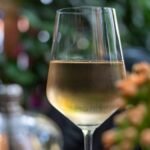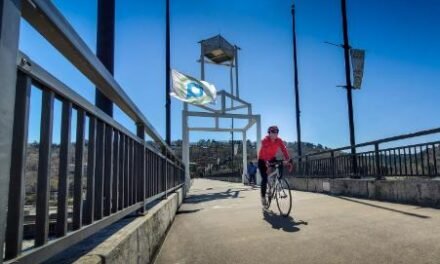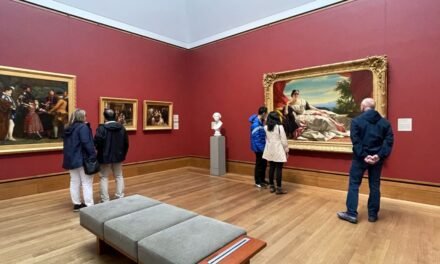
Chef Mavro is Five Diamond Hawaii Regional Cuisine
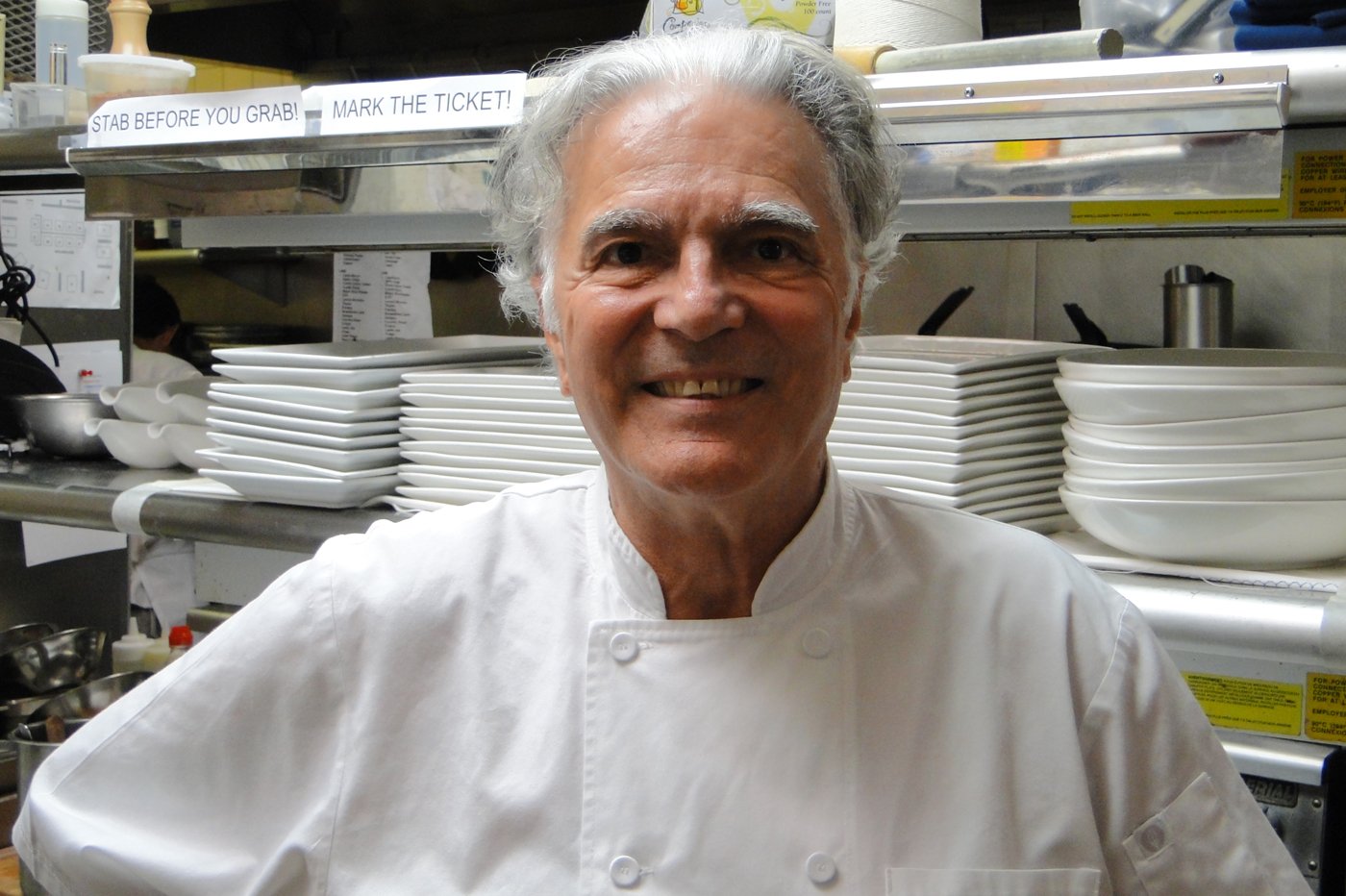
Lobster in a French Southeast Asian inspired broth of local lemongrass and kaffir lime, with tamarind, green papaya and a wedge of kurobuta pork belly. © Marc d’Entremont www.travelpenandpalate.com![]()
“I’m not a French chef,” says Marseilles born George Mavrothalassitis, “I’m a Frenchman who’s a chef.” This is not self modesty but a succinct definition of what has made his Honolulu venue, Chef Mavro, one of only two Mobil Five Diamond restaurants in the state of Hawaii. As a founding chef of the Hawaii Regional Cuisine movement, it is not a stretch for chef Mavrothalassitis to create menus influenced by Hawaii’s pan Asian products and his own eclectic imagination.
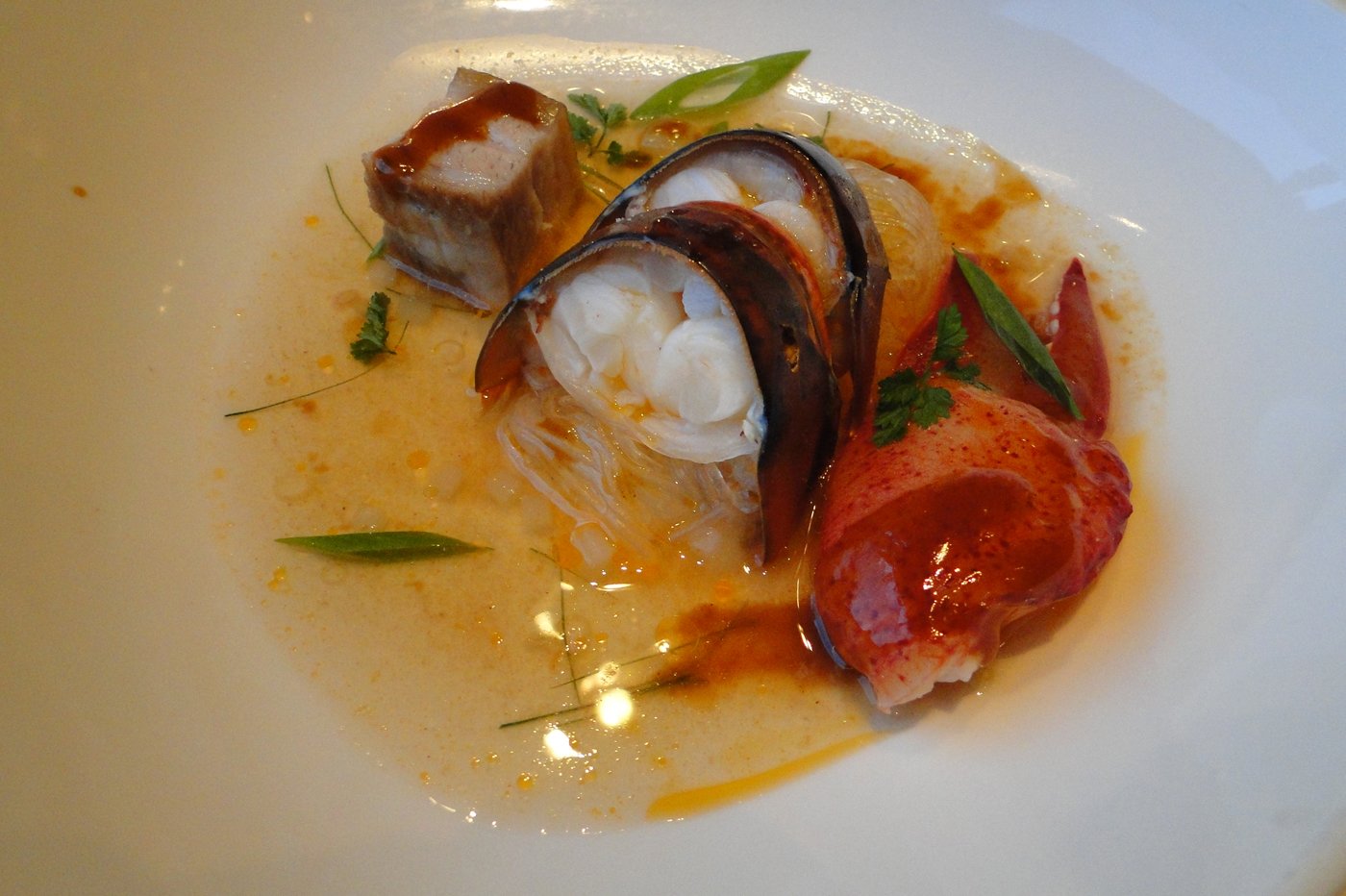
Lobster in a French Southeast Asian inspired broth of local lemongrass and kaffir lime, with tamarind, green papaya and a wedge of kurobuta pork belly. © Marc d’Entremont
Growing up in the ancient Mediterranean port of Marseilles, with a Greek father and an Italian mother, meant that a multicultural population and the freshest of ingredients were taken for granted. His grandfather had a farm in Provence where he’d spend much summer time in his young years. This had a great influence on his decision to become a chef, but parental persuasion diverted George’s attention to a university degree in engineering. After a half dozen successful years as a mechanical engineer he couldn’t kick the urge and started working in restaurants.
A chef of nouvelle cuisine, never trained in French classical cooking, George’s style was towards small-portioned dishes, light in texture yet complex in flavor, no roux, maybe a seasoned foam, perhaps a little stock as sauce. “It was molecular gastronomy before the term became something new.” Arriving in Los Angeles in the early 1980s, George discovered patrons uninterested in nouvelle cuisine. A young Wolfgang Puck advised George to adapt to American tastes. Chef Puck was then working on his soon-to-be famous line of pizzas.
George says that a stint in Denver exposed him to American tastes and to people who enjoyed an inventive style. Accepting a position as chef of Le Mer at the luxurious Halekulani Hotel in Waikiki, chef Mavrothalassitis relocated to Honolulu in 1988. He quickly saw the similarities between Holnolulu and Marseilles – multicultural mix, climate, meats, produce, seafood and fish.
Yet networking with fellow chefs, they shared boredom with the same international cuisine most restaurant menus offered. Honolulu hotel resorts imported 95% of all foodstuffs from the mainland and featured what chef Mavrothalassitis calls, “ceasar salad and chardonnay” blandness. Yet in predominately Asian ethnic neighborhoods small restaurants were serving food with vibrant flavors. Their owners and cooks were buying from local farmers and fishermen.
For fine dining restaurants, what was farmed locally was limited, so George Mavrothalassitis, along with eleven fellow chefs, founded the Hawaii Regional Cuisine movement in 1991 to encourage local farmers to diversify crops because the chefs would create the market for their products. That if you build it they will come philosophy continues to succeed for all concerned. The HRC’s Hawaii Culinary Education Foundation and the Kamehameha Schools Hawaiian culture and farmer programs share similar visions.
Hawaii, not Hawaiian, is an essential word choice. Traditional Hawaiian dishes are distinct from the many brought in by immigration over the past 150 years. Hawaii Regional Cuisine highlights the cultural diversity of the islands. “It’s not a style of cooking,” insists Chef Mavrothalassitis, “it’s a philosophy.” It’s a commitment as well to use local products from mauka (mountain) to mokoi (sea).
Quality control and consistency are always an issue when growing new produce for commercial use. At Chef Mavro, George Mavrothalassitis limits his inventory, has no freezer and orders food products daily. Since reservations are essential, and there are only three variations of the set menu, the kitchen can pinpoint their ingredient needs in advance.
Opening Chef Mavro in 1998, George Mavrothalassitis says his own style is heavily influenced by Japanese cuisine in creating a western, pan Asian mix with 85% of the menu locally sourced. Allan Ducasse was an early mentor influencing chef Mavrothalassitis’ decision to specifically pair wines with individual dishes. Wine as an essential flavor experience is a hallmark of Chef Mavro. Blind wine tastings are held among staff and consultants when 30 wines, each bottle covered by a brown paper bag, are narrowed down to the ones that work with each specific dish on the seasonal menu.
The resulting choices are as varied as Shirakabe Gura-Sho Chiku Bai sparkling sake served with a glistening sushi inspired ahi and aleppo pepper poke to Blandy’s 15 year Malmsey madiera for a Big Island inspired dessert of Hamakua coast Madre Chocolate. Maculan Estate 2011 Dinderello with its rich golden color and semi dry honey notes may seem more sensible with fresh fruit yet it equally complimented the buttery flavors of foie gras. The richness of this most French of appetizers was mitigated by a touch of bitter chopped Hawaii chocolate nibs and mole sauce.
Lobster tails are sourced from Kona Cold Lobsters, abalone from Big Island Abalone, two companies using state of the art cold seawater green technology to raise succulent seafood. Chef Mavro floats the lobster in a French Southeast Asian inspired broth of local lemongrass and kaffir lime, with tamarind, green papaya and a wedge of kurobuta pork belly. The wine’s a dry but fruity Grgich Hills Estate fume blanc that bridged all flavor notes.
Creamy seared Hawaii Goat Dairy feta cheese with Hawaii white honey is Chef Mavro’s homage to Greece. Hamakua Mushrooms find their way into a variety of dishes. A chilled blanc de blanc with a dash of elderflower liquor and lemon zest was paired with an aptly named amuse bouche. Kabocha squash curry soup topped with bacon coconut mousse sprinkled with cocoa nibs, proved everything’s better with bacon and chocolate.
The Hawaii Regional Cuisine movement has spread to small cafes, coffee shops, farmers markets and even the KTA supermarket chain, which carries many local products from an expanding number of farms. At a time when some of his fellow twelve chefs are retired, George Mavrothalassitis is the hands-on executive chef of his own restaurant. And like the philosophy of if you build it they will come, visitors worldwide keep Chef Mavro constantly creating. George Mavrothalassitis, and Hawaii, couldn’t be happier.
Four, six and eleven course set menus are priced between $85 – $175 per person. With wine pairings the menus are $140 – $273 per person. Reservations essential and can be made through their web site – closed on Mondays. Chef Mavro, 1969 S King St, Honolulu, HI, (808) 944-4714
This article first appeared on Examiner.com June 16, 2013




